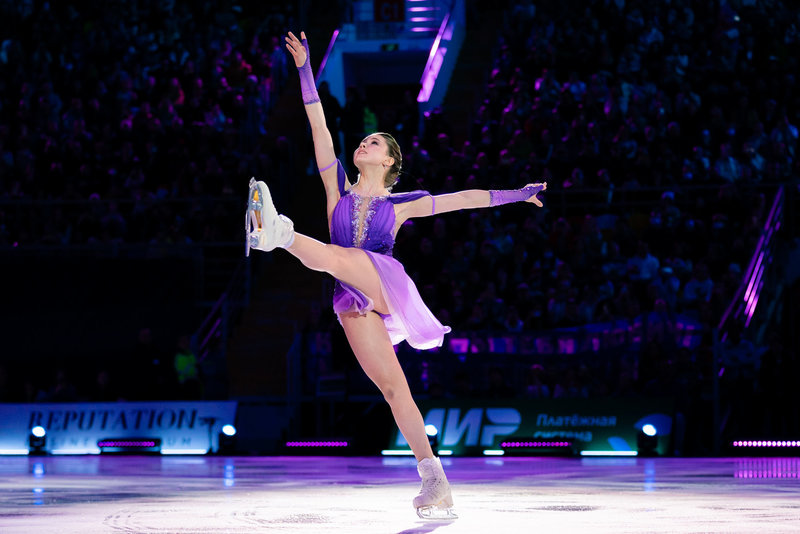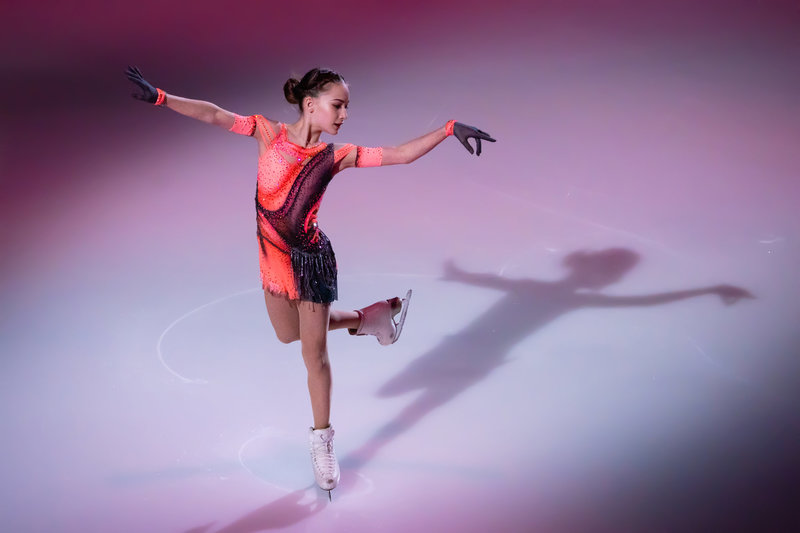“The main historic decision”, after summing up the results of the vote, the current president of the International Skating Union (ISU) at the time, Jan Dykema, did not hide his joy. “The most important thing that happened at this congress,” said Kim Jae-il, who is already the current president, a little later.
Did the age limit have at least a chance of not being exceeded?
None. Leaving aside the proposals to raise the age from the Netherlands, which were urgently submitted to the 2018 Congress (which was not even on the agenda), and from Norway two years later, they were always interested in this story. While our respected figure skating personalities filled the information space with comments that the Dutch had no figure skating and the Norwegians hadn’t raised anyone at all since the days of Sonya Henie – they say , where do you climb, – similar thoughts were already maturing inside the ISU itself.
According to our information, the ISU board was actually going to present its own age limit proposal in December 2020, just before the Russian championships. I learned this as soon as I received the document from the Norwegian initiative. Moreover, I discovered exotic – I was advised not to rush to publish it. They say that soon this story will have a bigger player and Norway with its proposal will simply not be needed.
Eventually it happened, but before that, the ISU decided to take a one-year break. I guess to prepare an evidence base – something that the Dutch and Norwegian proposals were completely lacking. The Board has commissioned a study from the Medical Commission and the Athletes’ Commission a survey of skaters and coaches around the world. It was released in January 2021 – a mundane Google Form, available to anyone and everyone who knows it. To be completely honest, I even voted for – of course, against. But judging by the fact that 86% of those polled were ultimately “for”, my vote really didn’t change anything. And they also say, they say, vote or you lose…
Strictly speaking, the ISU was fully ready to accept the age limit by mid-2021. There was everything for it, including a formed public opinion. By the way, he was not as stable as it might seem at first glance. Even the Netherlands, from which it all started, at some point, if they did not reverse, at least slowed down a bit. “Personally, I still support qualifying, but I can say this: my attitude has shifted from a light black and white paradigm to something more light grey,” one of the authors of the first proposal told me. qualification, Jeroen Prince. back in fall 2020- go.
But over time, everything worked out. It is generally accepted that the Beijing Olympics and especially the scandal with Kamila Valieva have become the point of no return, but in fact that has not decided anything. Unless it has become another strong argument so that someone does not inadvertently change their mind.
And nobody, in fact, was going to do it. Even before the start of the ISU congress in Phuket, I had written that the elevation of the qualification would be voted on almost unanimously – and that is what finally turned out. But personally, in this case, I am not interested in the consequences, but in the causes. This is what a representative of one of the national federations members of the ISU said to me after the congress: “I was very angry with the way everything happened. Of course there is envy towards the Russian skaters, the world cannot accept that they all win, so they decided to raise the qualification. But everything was somehow wrong, disorganized, and therefore the paired species also suffered. For them, the new qualification is a disaster.
The opinion about the envy of the successes of Russian single skaters as a harbinger of rising age walked everywhere, as far as possible. But, judging by what I heard, the main thing was not only in him. After talking to many proponents of qualifying among Western federations, I concluded that they really believe in the beneficial consequences of qualifying – in longer careers, less stress, the physical and mental health of the young generation, which will now develop steadily and systematically, and not in jerks, as before.
Will it work?
The question is difficult. In fact, of all that was said at the congress about the age limit, I liked the speech of the representative of the Russian Figure Skating Federation (FFKKR) Sergey Sviridov the most. He said the really powerful motivation for skaters to pursue their careers won’t be qualification, but increased prize money – and that’s really the wisest of all that has been said.
The fact is that the age limit will not solve the main thing – it will not give skaters the opportunity to compete on an equal footing with the leaders. Now, the age adjustment looks like a favoritism of the strong against the slightly weaker, both at the adult level and at the junior level. Moreover, in the latter case, its influence will become colossal, downright threatening.
With the previous qualification, the top skaters mostly remained at the junior level for one – a maximum of two seasons, after which they moved on to adults. They could be replaced by others – either those who are younger, or those who have decided to slow down with the transition to the master. It is a paradox, but it is precisely such a rotation that has given world figure skating a shift of power at the junior level and the opportunity to prepare as many athletes as possible to enter the adult level with no experience and with points in the international ranking. Yes, so far in the same country, but sooner or later Russian figure skating will fall into the buffer zone between one talented generation and another, and other countries will certainly have several years of dominance.
Now, in the near future, this option is completely ruled out. Another paradox, but 14-year-old Sofya Akatieva, whom the fan community called the main victim of the age limit (due to an unfortunate date of birth, she will not be able to reach adulthood until she is 18 – exactly during the next Olympics season), in fact, will be completely safe. Taking into account that Sofya Samodelkina, Adelia Petrosyan and 15-year-old Sofya Muravyova are calmly becoming mistresses next season, Akatieva simply has no competitors ready to fight her on equal footing here and now.
Apparently, nothing and no one will prevent him from winning the Junior World Championship four times in a row (if we are allowed to access it, of course). As well as the Junior Grand Prix Final with the Russian Junior Championship. And this story will repeat itself with each generational change.
What should we do while the dominant leader skims all the cream? Well, according to the authors of the qualification, to develop harmoniously, grow morally and physically, become stronger, and in no case lose motivation. “Good humor and health”, say the delegates of Phuket to our juniors and vote “yes”.
Why only ours? Yes, because in the vast majority of other countries the internal competition in the junior segment is not so high, and at the international level they already did not have many chances. For them, probably, qualification is really a plus – there is time to study and not chase after Russian girls.
And we only have three quotas for the same “world” junior. And the number of applicants increases every year.
With good intentions, the ISU locked up Russian figure skaters of all levels in juniors and forced them to bicker fiercely for a spot on the national team for several years. Mental health, injury risk reduction? No. From what I heard, in many of our coaching schools they are already planning to increase the workload specifically for juniors, because otherwise they will not be able to cope with the same Sonya Akatieva, but you want always go to the main competitions.
On the one hand, officials “insulated” the juniors from all the problems of early growth, and on the other, they made the situation worse. They said qualifying would prolong their careers, and they themselves took away the incentive for many athletes to serve multiple years in juniors without the chance to earn a grade and somehow recover. another the money investments of their parents to the detriment of prizes (at junior competitions they are much lower than in adults). The Hungarian Figure Skating Federation proposed at the congress to establish junior championships of Europe and four continents – as part of the increase in qualifications, the initiative is the most important, simply necessary, because now the juniors only have two major international tournaments in a season.
“The ISU Council is not supporting this because we don’t have the money,” says ISU CEO Freddy Schmid, and the Hungarians are forced to withdraw their offer. “Hold on”, as the delegates say to our juniors. And read the medical board reports on how you are being treated.
Maybe the age limit is really necessary for a world figure, as Eric Radford, head of the ISU Athletes’ Commission, said. Maybe things will go better with him. But here and now, I personally see that because of him, we run the risk of facing a mass exodus of figure skaters already at junior level, and a forced and painful exodus for many. And I still can’t accept it.
Source : MatchTV
I am William Jackson and I have a passion for sports journalism. With over 3 years of experience in the industry, I have worked in a variety of roles to improve the quality and accuracy of sports news coverage. As an author at Athletistic, I specialize in covering football news and providing comprehensive analysis for fans around the world.




